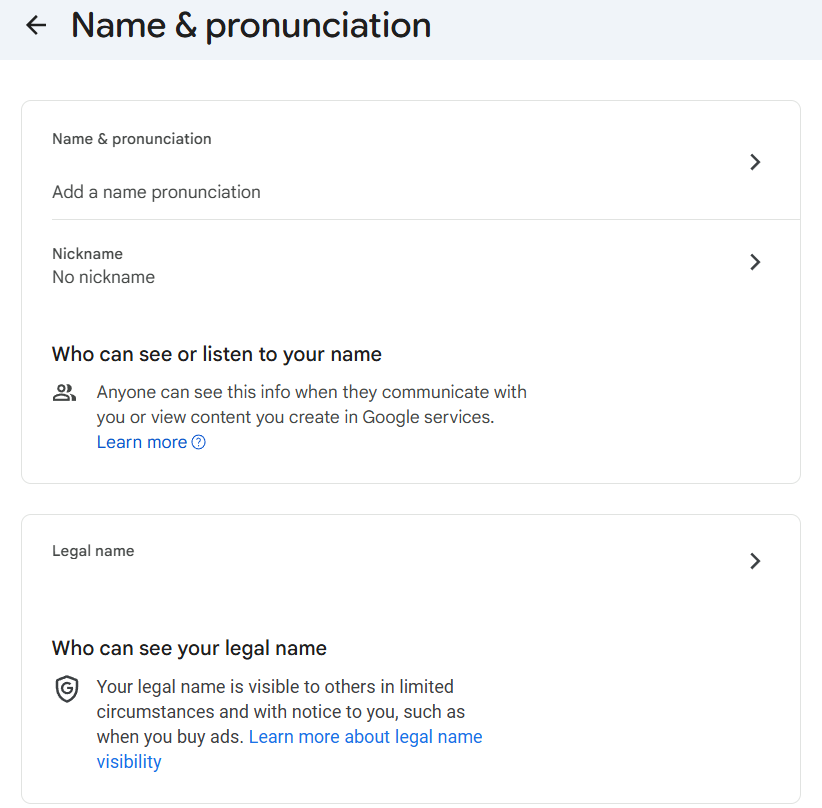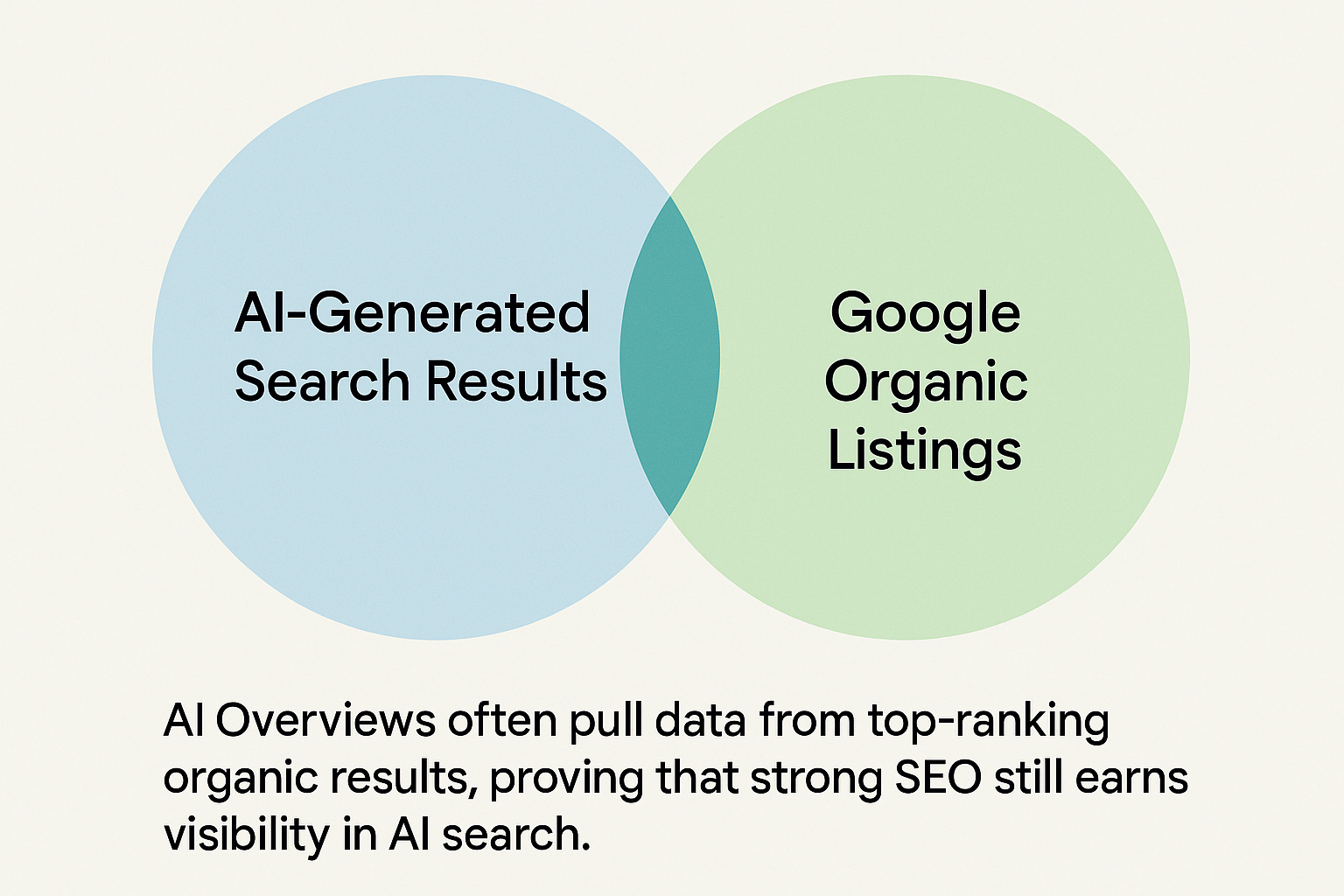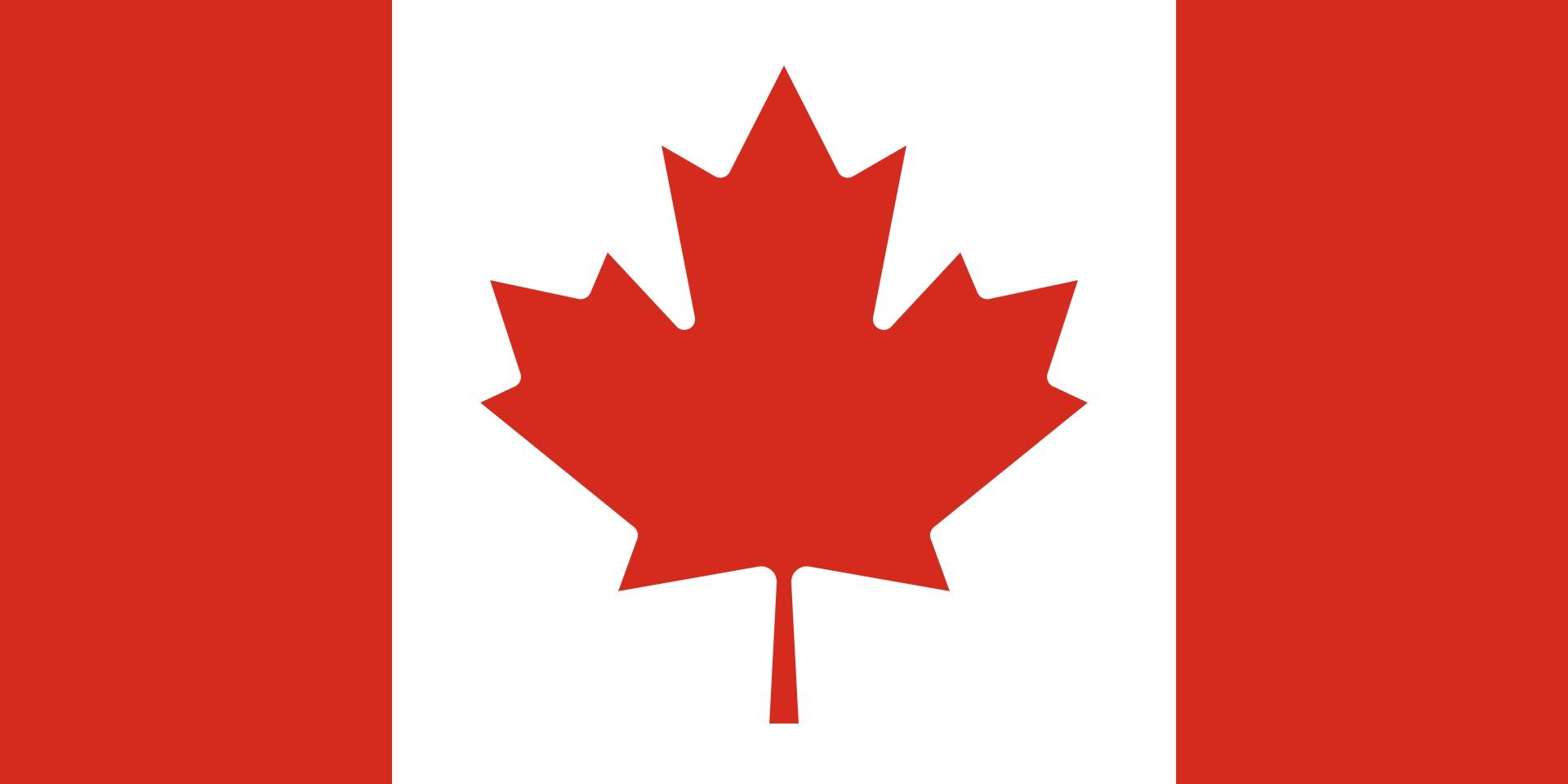Omnichannel Marketing: How to Reach More People and Create Loyal Customers
Marketing was once much less complex than it is today. Consumers now interact with brands across seemingly endless channels on different platforms and devices — sometimes simultaneously. And they expect the same experience regardless of the channel.

For example, a consumer might want to ask a question about your product on Twitter and then have another question asked through the chat system on your website. Will that consumer receive the same answer, messaging, and tone between both channels? Does your business actively make these channels available and provide rapid responses from both?
Your business needs to be available where consumers expect and provide a unified message, regardless of if it's a customer support ticket or an Instagram ad.
Enter omnichannel marketing. It’s a new marketing and consumer engagement approach that delivers a consistent experience, improves the buyer’s journey, and keeps the customer in focus.
Studies show that businesses with an omnichannel approach retain an
average of 89% of their customers, a stark contrast to the 33% retention by companies with no or weak omnichannel strategies. Consumers appreciate the personalization that omnichannel marketing provides and the consistent experience regardless of how they interact with your brand.
It’s not just retention — other studies indicate a 287% increase in purchase rate after adopting an omnichannel marketing strategy as opposed to a single-channel strategy. This astounding increase is because omnichannel calls for integration and cooperation across all business units and channels to create a consistent experience. In contrast, single-channel strategies can become disjointed and even confusing.
Ultimately, an omnichannel approach leads to loyal customers who want to buy from you more often. It’s the dream of any business. But achieving the impressive results possible with omnichannel marketing might seem impossible and complicated, and depending on how you go about it, it can be.
Fortunately, we’re here to help you understand this new marketing methodology and how you can get started with it. So keep reading to learn everything you need to know about omnichannel marketing.
So What Exactly is Omnichannel Marketing?
Omnichannel marketing is the consistent integration of branding and messaging throughout every customer touchpoint, both online and offline (if applicable), as consumers move down the sales funnel.
It might sound like just another marketing buzzword, but it’s a radical transformation in how businesses conduct marketing campaigns, customer support, and sales.
The goal of omnichannel is to embrace a customer-centric approach across your entire company to guarantee a consistent and positive experience regardless of the specific channel. A genuine omnichannel approach has several key elements, including:
- An identifiable and consistent tone and vision.
- Personalized content based on past interactions in the buyer’s journey, regardless of the channel.
- Allows consumers to continue through the sales funnel seamlessly, even if they switch devices or channels
- Quick responses to consumer contact that does not require them to repeat information
- Agility to update and alter approaches in response to data-driven insights
If your marketing strategy doesn’t have each of those characteristics, it’s not omnichannel. It’s probably multichannel.
Multichannel vs. Omnichannel
It’s easy to mix up multichannel and omnichannel marketing; the terms seem similar. But in practice, they’re significantly different.
A multichannel approach is more superficial and calls for having marketing campaigns in several marketing channels to make your brand available to consumers. This methodology often calls for reaching customers through as many channels as possible, and each channel is generally siloed and does not interact with the others.
An omnichannel approach is also present in many channels, but it goes further to ensure an integrated and seamless customer experience across all channels. It’s a genuinely customer-centric approach that considers a personalized and all-encompassing approach to the buyer’s journey.
Which approach would you prefer as a consumer? Do you want to see disjointed ads and emails that have nothing to do with the products you’ve purchased or shown interest in? Or a holistic approach that keeps you in focus the entire time?
Top Benefits of Omnichannel Marketing
We’ve already touched on some benefits of omnichannel marketing and communications, but let’s dive deeper into how and why businesses across all industries are adopting this new approach.
Improved Customer Experience and Retention
Customers want and expect a great experience from any company they work with. And business leaders are well aware of the value of providing them with a memorable and personalized experience.
A recent survey of nearly 2,000 business professionals asked them to rank their priorities over the next five years. Improving
the customer experience came in first at 45.9% of respondents, beating even product and pricing.
On the other side of the coin, customers highly value customer experiences, with 86% of surveyed customers indicating they’ll pay more for a product from a company that provides a better experience. Perhaps that’s why business professionals prioritize experiences over pricing and product improvements?
Better experiences naturally create loyal customers. It’s hardwired into our brains to repeat actions that produced a result we enjoyed. So customers who had a good experience the first time will return for more.
Enhanced Reach and Brand Awareness
Omnichannel marketing focuses on the customer, so you’ll naturally be where they expect you. This often takes the shape of social media channels, but it also includes your Google Business Profile, website search ranking, and any other way a customer might want to find you. As a result, you’ll reach even more customers as you enhance and integrate these channels.
Brand awareness goes beyond reach — it describes overall brand recognition from your potential customers. For example, when scrolling through Twitter, will your target audience be able to immediately identify your brand from an organic post or paid ad?
How many people do you think still have to read the word ‘McDonalds’ when they see the golden arches to figure out which restaurant it is?
An omnichannel approach repeats unified and consistent branding and messaging to improve the awareness of your brand within your industry. You might not be striving to become an international fast food chain, but you want potential customers in your industry to recognize your brand immediately — and expect a positive experience from you.
Creates a Treasure Trove of Data
We’ve been seeing the power of data in marketing campaigns for decades. But in reality, legacy single-channel marketing campaigns produce siloed data that is isolated from the other data generated by the same consumer.
Omnichannel marketing integrates the data gained from every customer touchpoint throughout their journey. As a result, it can be analyzed and leveraged to create highly personalized experiences for your current and future customers.
Have you ever gotten an email from Amazon about a type of product you’ve never searched for or even knew about? Probably not; Amazon is a master at leveraging data to create personalized experiences. You’ve almost certainly gotten emails about products related to your searches and purchases.
Every customer interaction produces data that can be gathered and analyzed as a whole to form a well-rounded idea of the specific consumer. For example, someone who loves the shoes you sell but has never searched or interacted with ads about purses won’t appreciate a purse promo email.
Increased Revenue from Happy Customers
An omnichannel approach prioritizes the customer experience, so once embraced, every aspect of your buying process is seamlessly integrated. It doesn’t matter what channel or device the customer uses; you’ll be ready to make it easy to complete their purchase.
Customer experience (CX) optimization is essential for an effective omnichannel strategy. That means your website, both the mobile and desktop version, have been rigorously tested and optimized to reduce friction during the checkout process.
Roughly
70% of visitors who enter the ‘cart stage’ never progress to actually making a purchase. A frictionless checkout process, clear refund, privacy policies, and cross-device will encourage more people to check out.
Omnichannel strategies take it even further — personalized automated cart abandonment recovery processes. These automated programs reach out to customers who didn’t complete the checkout process and incentivize them to return, often with a discount code or a simple reminder.
While cart recovery services have been around for a while, the omnichannel aspect calls for pulling data from other channels and levering it for more personalized recovery contacts.
Empower Customers to Communicate How They Want
Customers might have questions about a product or service before they buy, or they may have issues with a completed purchase. In addition, if only one or two contact channels are available, you’ll get frustrated customers who prefer other options.
Omnichannel strategies make your company available everywhere that they’ll expect. This includes chat support on your website, quick responses from social media DMs, email support, and a toll-free phone number.
A customer that can easily reach you and receives a quick and helpful response will walk away happy. But, conversely, nobody wants to make a repeat purchase from a company that was hard to reach about a problem.
Facilitate the Entire Buyer’s Journey
We often see the buyer’s journey illustrated as a funnel that customers move through linearly. But, in reality, buyers will jump between stages as they check out your competitors, research other solutions to the pain point you solve, and decide exactly what product to purchase.
From marketing strategies to customer support to sales calls, an omnichannel approach helps customers move through the entire journey, regardless of their route.
Plus, you’ll have the data from every touchpoint to continually offer increasingly personalized content. As a result, your paid ads and email marketing campaigns will become so focused on their needs that they’ll understand precisely why they should become a customer.
How MAP Enables Omnichannel Marketing
At Conscious Commerce Corporation, we created an integrated and comprehensive approach to marketing we call MAP — Market. Advertise. Promote.
Every single thing we do for our customers embraces the omnichannel philosophy and techniques so that all of our strategies and initiatives work together and enhance each other.
Let’s dive into some of our specific offerings that enable omnichannel marketing for our customers.
MAP Social
Paid ads on social media platforms give businesses powerful ways to reach new customers, integrate with other marketing channels, and enhance brand awareness.
But they can also be complex to manage without the right expertise, especially when pursuing an omnichannel strategy.
MAP Social focuses on complete paid ad management with campaigns that convert. Our expertise in running social media campaigns frees you up to focus on the core of your business. We’ll craft your ads, source compelling images, and configure your ads for peak performance.
Additionally, we provide instant and transparent insights into what we’re doing and how your ads perform. So you’ll never be left in the dark.
Our social media marketing campaigns also produce valuable data that works with our other MAP services to create a truly omnichannel experience for your customers. So even if a customer doesn’t immediately convert through a social ad, we’ll be aware of other contact points and leverage data effectively to move them through the buyer’s journey.
See it in Action: CfPIE
CfPIE leverages MAP Social to expand awareness and reach of its industry-recognized training courses. With a single button click, they’re able to post to multiple social channels. Then, they’re able to easily monitor engagement with built-in reporting features. MAP Social even lets them respond to comments and messages in real time within the dashboard.
MAP Meet
Client and customer interaction is the secret to success in many industries. MAP Meet gives you the tools necessary to manage clients and build lasting relationships that grow your business and improve their experience.
Meet is fully integrated with our overall omnichannel strategy. You’ll have important customer information readily available, so you’re always informed before reaching out.
Additionally, MAP Meet provides an easy-to-use portal for managing client bookings, receiving payments, and conducting highly-targeted email and SMS campaigns.
See it in Action: Modern Speak
Modern Speak’s business depends on its clients, and MAP Meet helps them strengthen client relationships by offering a frictionless booking process. They also leverage the built-in CRM features to easily keep in touch, update information, and follow up with clients. By using MAP Meet, Modern Speak has been able to grow its business by nurturing client relationships with meaningful contact. Check our out case study
MAP Website & eCommerce
Every aspect of your online presence matters. Your website needs to be professionally designed, fully optimized, responsive, and ready to convert visitors into customers.
MAP Website & Commerce takes your idea or outdated website and turns it into the modern website that your visitors will expect. We've got you covered whether you’re aiming to capture leads or operate an entire eCommerce business.
Our team of experienced web designers knows what it takes to make a compelling website. But we also know it’s not just about looks; it needs to load quickly, provide security, and drive conversions.
We embrace omnichannel principles and create behind-the-scenes systems that track where visitors came from, what else they’ve interacted with, and what personalized content should be displayed.
See it in Action: Econo-Chem
Econo-Chem, a leader in affordable and environmentally friendly cleaning solutions, uses MAP Website & Commerce to increase its conversion rate. Econo-Chem is able to secure more orders by having a fully-responsive website with the eCommerce store built right-in, creating a seamless customer experience.
MAP Email Marketing & Automation
Email marketing remains an incredibly effective marketing channel and is fully integrated into our other services. MAP Email Marketing & Automation integrates with the rest of your online presence and other apps you’re already using to drive your email marketing campaigns.
Our marketing experts design campaigns that use advanced AI and automation technologies to deliver the right emails to the right people with personalized content. We’ll design robust campaigns that move leads through the buyer's journey and encourage existing customers to return for more.
Additionally, we’ll help grow your email list with integrations with the top platforms, such as WordPress and Wix. Our exit intent pop-ups and opt-in forms encourage your visitors to subscribe.
See it in Action: Dirty Laundry Vineyard
Dirty Laundry Vineyard uses MAP Email Marketing & Automation to continually increase brand awareness and improve its conversion rate. This goal is achieved through regular and automated emails that highlight upcoming events or promotions. Additionally, Dirty Laundry has used A/B testing and MAPs advanced reporting features to continually improve its customer contacts, which are built right into the platform.
MAP Chat
Customers expect an easy-to-use chat box on your website, and MAP Chat provides it. Our chat service integrates with all your channels to provide a single dashboard to communicate with customers, including WhatsApp, Messenger, Apple Messages, and your website.
No more switching between a dozen different social media platforms and apps to chat with your customers. See everyone in one place to make it easy for you and your customer support team to communicate with anyone who reaches out and coordinates your omnichannel efforts.
MAP Chat also provides advanced AI chatbots to help answer common questions about products or customer service topics. As a result, MAP Chat will reduce the workload on your customer support team while helping make more sales.
See it in Action: Flowers Team Realty
Real-estate moves quickly, and MAP Chat helps Flowers Team Realty provide rapid and high-quality customer service to anyone who contacts them. MAP Chat is built right into their website and offers knowledgeable assistance to any real estate questions. Additionally, MAP Chat allows Flowers Team to respond in real-time during working hours and receive notifications about messages they receive outside of business hours.
MAP Members
Sometimes you want to give your knowledge and expertise away for free, but that’s not always the case. Offering a membership section on your site creates a new revenue stream and deepens your relationship with your clients or customers.
MAP Members lets you quickly transform your expertise into members-only content. Nutrition experts, personal development coaches, and business trainers, among countless others, have all created sustained revenue through courses and content only available to subscribers.
See it in Action: Cindy Smith AEP
Cindy Smith offers exclusive, high-value content with MAP Members. She’s able to easily and quickly create gated content with MAP’s built-in web integrations that are only available to paying members while still offering free content to everyone else. MAP Members lets her nurture both sides of her community and attract new members to her exclusive content.
MAP Domains
Domain names are an essential part of your brand. A memorable domain name will help current and potential customers return to your website to learn more or complete their purchases. In addition, the right domain name facilitates easy word-of-mouth marketing so happy customers can tell people how to find you.
MAP Domains is a no-nonsense domain service that lets you register your domain and begin building your online presence. We’ll help you integrate your domain with everything else, or you can buy it as a standalone purchase and start building your online presence.
See it in Action: Benjamin Moore Vancouver
Benjamin Moore leverages MAP Domains to continually build authority while maintaining consistency and connectivity with fast and efficient hosting and domain registration. The company continually explores branded and relevant domain names to help improve brand recognition in its market.
Google Workspace and Google Marketing Platform
Google has a long history of helping businesses become more productive and improve their marketing. Google Workspace and Google Marketing Platform are two services that accomplish just that.
Google Workspace was once known as Google Suite. It’s a collection of cloud-based productivity and collaboration tools to help your entire organization work more effectively and use your branding. One of the early selling points of the platform was that businesses could use the Gmail app with their business domains, and it’s grown so much more from there.
Google Marketing Platform is a new service that provides a unified analytics and marketing platform to help easier understand and manage all the data your efforts are generating. The platform integrates with most of Google’s services, from Google Analytics to Data Studio, to help you see all your data in a single dashboard.
Where does MAP come in? First, we help you set up and manage these services so that you’re getting the absolute most out of them. Additionally, we’ll leverage data within them to inform our other marketing campaigns in the true spirit of omnichannel marketing.
See it in Action: Scott’s Sod
Scott’s Sod utilizes Google Workspace & Google Marketing Platform to streamline essential processes, save time, and use Google’s services while maintaining consistent branding. The company leverages branded email aliases so every employee represents the company. Additionally, it uses Google Drive so that employees can easily access essential documents from anywhere, cutting down on time spent communicating with each other to find the right file.
Google Business Profile
Your Google Business Profile is essential to your online presence, especially for businesses with a physical location.
Google Business Profile allows you to set up and manage your business's appearance on Google Maps and Google Search, including setting business hours, responding to customer reviews, and uploading pictures.
Our MAP services will help you set up your
Google Business Profile so that your business makes a solid first impression and you know exactly how to interact with reviewers and answer questions. We take the guesswork out of the process so you can do it right the first time.
See it in Action: The Pioneer on 8th
The Calgary-based wedding and event venue uses Google Business Profile to drive high-value leads to their website by making important information readily available for anyone who searches for a high-end venue. Additionally, they use the post feature to provide meaningful updates, along with taking advantage of Google Maps’ reviews to talk with existing clients.
How to Get Started with Omnichannel Marketing
How can you get started with omnichannel marketing to start enjoying all of the benefits it can provide? It will require company-wide changes, expanding your tech stack, and embracing systematic analysis of your efforts.
Let’s go over a brief overview of how you can begin:
- Adopt a customer-centric mindset: Omnichannel marketing begins by shifting your focus solely on the customer. Therefore, every marketing campaign and customer support policy must emphasize creating a fantastic customer experience.
- Build a strong foundation with your website and social profiles: Your social media profiles are your brand's voice, while your website is its home. Revamp and refine them all, so you always make a good impression.
- Be where your customers expect: Do you have profiles on the dominant social networks within your industry? Do you offer chat support on your site? How about a toll-free phone number? Never make it hard to reach your business and invite customer contact.
- Create consistent messaging but avoid boilerplates: The omnichannel approach requires a consistent message across all ads, website copy, and customer support tickets. But you should also avoid boilerplate content. Using the exact same content and wording repeatedly will not only make you appear less genuine but you may be penalized by Google and social media platforms. Keep creating new content; just keep the same overall tone and intent for all of it.
- Speak with a unified voice: Marketing, customer support, and sales all need to have the same voice. That means including any customer-facing department in the omnichannel initiative. Make sure everyone understands how to embrace the tone of your brand when working with customers or creating content for them.
- Have platform and device-specific calls-to-action: A call-to-action should be included in your marketing campaigns and most of your other customer contacts. But it needs to be specific to their device and platform. For example, don’t send a mobile user to your desktop or prompt an automatic mobile app download in your email signature.
- Analyze and revise frequently: Data-driven insights are the real power behind omnichannel marketing. You might not get it right the first time, so keep analyzing the wealth of data generated by your efforts and make revisions as needed. Utilize A/B testing to figure out the best landing pages, collect feedback from your customers, and always focus on improving the customer experience.
Team Up With MAP for Effective Omnichannel Marketing
Omnichannel marketing can become a powerful approach to everything your business does. Customers appreciate the personalization and consistency, which leads to increased revenue, more loyal customers, and new opportunities to expand your business.
Yet, omnichannel marketing can be challenging to embrace as a company, and many companies struggle with the technical side of integrating your efforts and leveraging advanced technologies.
Make MAP your omnichannel marketing partner to quickly set up the necessary tools, make the mindset changes, and start integrating your channels to create a personalized and customer-centric experience. Ready to get started?
Reach out to us today, and let’s grow your business together.







